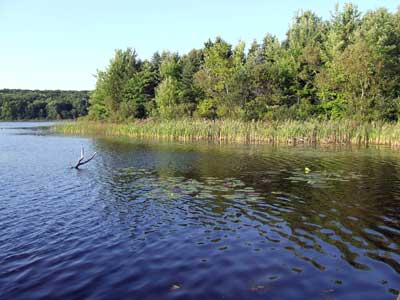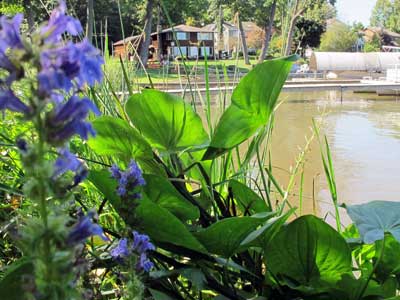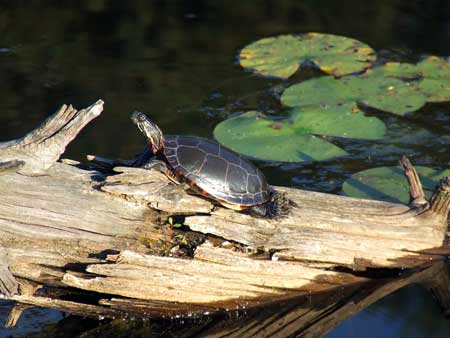Smart lakefront plants
Learn how you can love your lake by planting smart plants that are native to Michigan.
 What lakefront property owner wouldn’t appreciate the pristine, relaxing environment found right at the water’s edge? For most of us, it seems logical for our lush, green lawns to be clear of vegetation right down to the gently lapping waves. However, what is not widely known is that Michigan lakes have naturally built in “quality control” systems right where the water meets the land.
What lakefront property owner wouldn’t appreciate the pristine, relaxing environment found right at the water’s edge? For most of us, it seems logical for our lush, green lawns to be clear of vegetation right down to the gently lapping waves. However, what is not widely known is that Michigan lakes have naturally built in “quality control” systems right where the water meets the land.
In other words, plants and vegetation at the lake edge and shallows play an amazing buffering role that provides protection against wave “scouring” that occurs with increased boating, man-made erosion from building or construction, or increase runoff from impervious surfaces.
Few people know or understand how intense development and loss of natural shoreline has affected their delicate Michigan lake ecosystems, water quality and tourism. Even our everyday gardening practices can have a profound effect on the lake.


(Left) Photo credit: Rebecca Finneran, MSUE. (Right) Photo credit: Jane Herbert, MSUE
Love your lake!
One way we can affect the downward spiral of our lake’s water quality is to reinvest in the buffer plants that serve as a transition from “upland” to open water. This in no way means that lakefront owners should have less access to their amazing natural resource. A well thought-out design that incorporates upland plants and native shoreline and shallow plants will not only decrease the negative effects that erosion can have on a lake, but will increase habitat for turtles, create better opportunities for fishing and decrease habitat for annoying geese.
Several years ago, Michigan State University Extension, along with a number of concerned state and local natural resource groups, formed the Michigan Natural Shoreline Partnership (MNSP) to assist lakefront owners in better understanding their lake ecosystems and to help them take steps to protect Michigan lakes from further degradation. Lakefront property owners thinking of naturalizing their shoreline can access the suggested native plant list of the MNSP. Those looking for more in-depth design information may consider the group’s new publication, “Natural Shoreline Landscapes for Michigan Inland Lakes: Guidebook for Property Owners.”
Native plants on the MNSP’s list are divided into four shoreline planting zones:
- Below the Water Level: These are the plants that are found in the aquatic zone. Use these plants for planting areas within the lake.

- Between the Water Level and the Ordinary High Water Mark: These plants like it wet but do not like to actually be in the lake. They can handle frequent water level changes ranging from being flooded for days at a time to being dry for short periods of time. These plants are also the best ones to withstand the energy produced from wave action and winter ice.
- Above the Ordinary High Water Mark: These plants are still considered wetland plants, but they are typically further from the lake edge. They like the soil to be consistently moist and they can handle a small amount of flooding. They do not like the constant stress that comes from waves and ice.
- Upland Plants: These plants like dry conditions. This section was included to provide homeowners with native plant suggestions to use in the remaining part of the landscape to allow for opportunities for a comprehensive landscape design.
Download a printable PDF: Smart lakefront plants
For more information on a wide variety of smart gardening articles, or to find out about smart gardening classes and events, visit www.migarden.msu.edu.
This information was adapted in part from “Native plants for naturalizing your lakeshore property” written by Jane Herbert, Michigan State University senior natural resources educator.
It should be noted that the Michigan Department of Environmental Quality (MDEQ) prohibits the planting of non-native plants below the Ordinary High Water Mark as regulated by Part 301, Inland Lakes and Streams, of the Natural Resources and Environmental Protection Act, 1994, PA 451, as amended (Part 301). Also, the placement of any type of wave break to protect plantings until establishment requires a Part 301 permit from the MDEQ.
Additional resources



 Print
Print Email
Email


